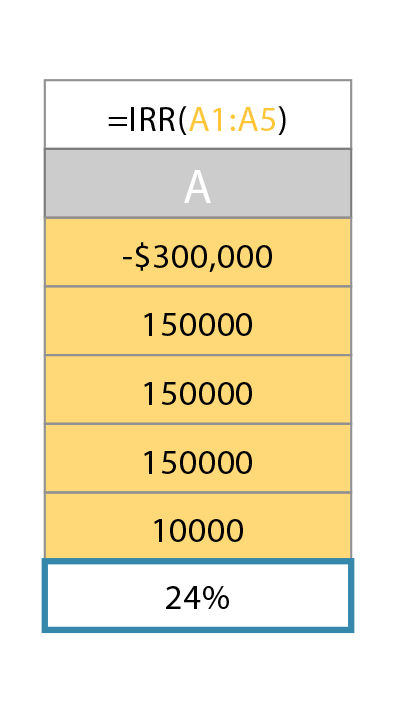This is called second-order (second-derivative) rate level of sensitivity. Gamma shows the quantity the delta would change provided a $1 relocation in the hidden security. For instance, presume an investor is long one call option on theoretical stock XYZ. The call choice has a delta of 0 - what does apr stand for in finance. 50 and a gamma of 0.
Therefore, if stock XYZ increases or decreases by $1, the call alternative's delta would increase or decrease by 0. 10. Gamma is utilized to figure out how steady a choice's delta is: greater gamma values indicate that delta could alter drastically in reaction to even little motions in the underlying's rate.
Gamma worths are usually smaller the additional far from the date of expiration; alternatives with longer expirations are less conscious delta changes. As expiration approaches, gamma values are usually bigger, as rate changes have more impact on gamma. Options traders may choose to not only hedge delta however likewise gamma in order to be delta-gamma neutral, indicating that as the underlying rate relocations, the delta will remain near absolutely no.
This is the option's level of sensitivity to volatility. Vega shows the amount an option's cost modifications offered a 1% change in indicated volatility. For instance, an alternative with a Vega of 0. 10 suggests the alternative's worth is expected to change by 10 cents if the implied volatility modifications by 1%.
10 Easy Facts About How To Finance A Tiny House Described
Conversely, a decrease in volatility will negatively affect the worth of the option. Vega is at its optimum for at-the-money alternatives that have longer times up until expiration. Those knowledgeable about the Greek language will point out that there is no real Greek letter named vega. There are different theories about how this symbol, which looks like the Greek letter nu, discovered its way into stock-trading lingo.

This determines sensitivity to the interest st thomas timeshare rate. For instance, presume a call choice has a rho of 0. 05 and a price of $1. 25. If rates of interest rise by 1%, the value of the call alternative would increase to $1. 30, all else being equivalent. The reverse is real for put choices.
Some other Greeks, with aren't discussed as often, are lambda, epsilon, vomma, vera, speed, zomma, color, ultima. These Greeks are second- or third-derivatives of the rates design and impact things such as the change in delta with a modification in volatility and so on. They are significantly utilized in alternatives trading methods as computer software application can rapidly calculate and account for these complex and sometimes mystical threat factors.
The holder has no responsibility to buy the property if they do not desire to buy the possession. The threat to the call alternative purchaser is limited to the premium paid. Variations of the underlying stock have no impact. Call options purchasers are bullish on a stock and believe the share price will increase above the strike cost prior to the option's expiration.
Why Are You Interested In Finance for Beginners
Their earnings on this trade is the marketplace share cost less the strike share cost plus the expenditure of the optionthe premium and any brokerage commission to put the orders. The outcome would be increased by the variety of choice contracts acquired, then increased by 100assuming each contract represents 100 shares.
The holder is not required to purchase the shares but will lose the premium spent for the call. Offering call choices is understood as writing a contract. The writer gets the premium fee. Simply put, a choice buyer will pay the premium to the writeror sellerof an option. The maximum profit is the premium got when offering the alternative.
If the dominating market share cost is at or below the strike price by expiration, the alternative expires worthlessly for the call buyer. The choice seller pockets the premium as their profit. The option is not exercised due to the fact that the choice buyer would not purchase the stock at the strike rate higher than or equivalent to the dominating market cost.
Simply put, the seller must either sell shares from their portfolio holdings or buy the stock at the prevailing market cost to sell to the call choice buyer. The contract writer sustains a loss. How big of a loss depends on the cost basis of the shares they need to utilize to cover the alternative order, plus any brokerage order expenditures, however less any premium they got.
Get This Report about How Long To Finance A Car
The call purchaser only loses the premium. The author deals with limitless risk because the stock cost could continue to rise increasing losses substantially. Put options are financial investments where the purchaser believes the underlying stock's market value will fall below the strike cost on or prior to the expiration date of the choice.
Given that purchasers of put choices desire the stock rate to decrease, the put choice pays when the underlying stock's price is below the Have a peek at this website strike price. If the dominating market price is less than the strike price at expiration, the investor can exercise the put. They will sell shares at the alternative's greater strike cost.
Their earnings on this trade is the strike rate less the existing market value, plus expensesthe premium and any brokerage commission to place the orders. The outcome would be multiplied by the number of choice contracts purchased, then increased by 100assuming each contract represents 100 shares. The value of holding a put option will increase as the underlying stock rate declines.
The threat of purchasing put alternatives is restricted to the loss of the premium if the alternative expires worthlessly. Offering put alternatives is also called writing a contract. A put alternative author believes the underlying stock's rate will remain the very same or increase over the life of the optionmaking them bullish on the http://holdenvyof204.image-perth.org/an-unbiased-view-of-what-is-internal-rate-of-return-in-finance shares.
The Ultimate Guide To How To Finance A Pool With No Equity
If the underlying stock's rate closes above the strike price by the expiration date, the put choice ends worthlessly. The writer's optimum earnings is the premium. The choice isn't exercised since the choice buyer would not offer the stock at the lower strike share cost when the marketplace price is more.

Simply put, the put option will be exercised by the option purchaser. The purchaser will offer their shares at the strike cost because it is greater than the stock's market price. The threat for the put choice writer occurs when the market's price falls below the strike cost. Now, at expiration, the seller is required to acquire shares at the strike rate.
The put writerthe sellercan either hold on to the shares and hope the stock cost rises back above the purchase cost or sell the shares and take the loss. Nevertheless, any loss is balanced out rather by the premium received. In some cases an investor will write put choices at a strike cost that is where they see the shares being an excellent value and would be willing to purchase that cost.
Pros A call option purchaser can purchase possessions at a price that is lower than the marketplace when the stock's cost is rising. The put option buyer can profit by offering stock at the strike price when the market cost is below the strike cost. Alternative sellers get a premium fee from the buyer for writing a choice.